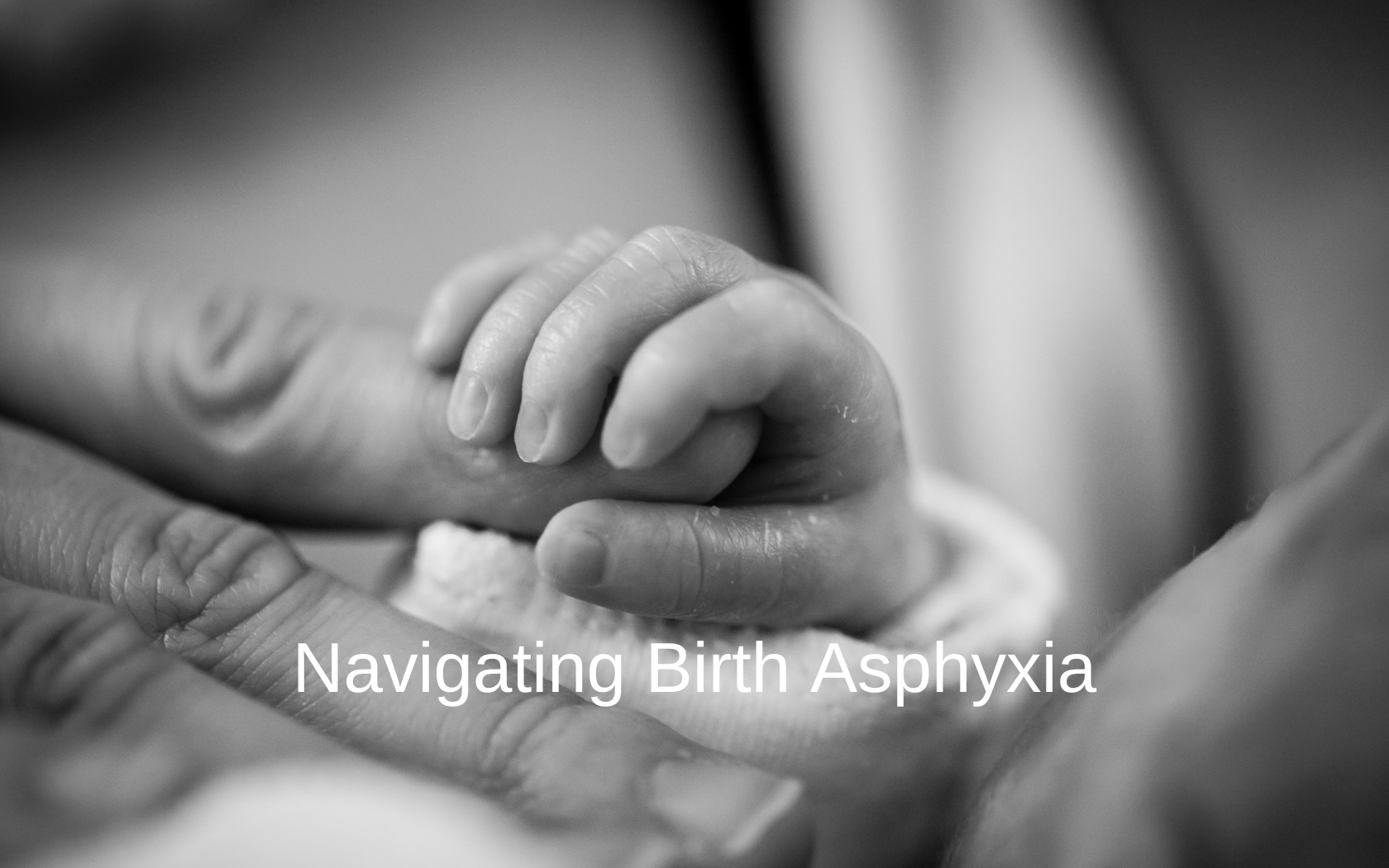Birth asphyxia is one of the most serious birth injuries. Why? Because it can inflict permanent damage on a baby’s brain. The long-term effects of birth asphyxia range from learning disabilities, to hearing and vision problems, to cerebral palsy.
Did your child suffer asphyxia during birth? Understanding what complications may arise can help you prepare for the challenges your child may face. Also, you should know what legal help is available for children whose birth asphyxia long-term effects result from medical malpractice.

What is Birth Asphyxia?
Birth asphyxia is a condition where a newborn experiences a lack of oxygen during the birthing process. It could happen before, during, or right after birth.
Newborns need oxygen just like anyone else, even while still in the womb. They receive it through the blood that flows from their mother. If something interrupts this blood flow, the baby can suffer asphyxia. Without oxygen, the brain and other organs can’t function the way they should.
After birth, the baby no longer receives oxygen from the mother. But he might have issues breathing on his own, either because of an airway blockage or another condition. So it’s possible for babies to suffer asphyxia shortly after birth as well.
Asphyxia vs. Hypoxia (And Other Related Terms)
Terms used to describe conditions related to oxygen deprivation in babies can be confusing. Especially when they’re used interchangeably. Here are the unique meanings of each:
- Neonatal asphyxia: Oxygen deprivation during the immediate post-birth period.
- Perinatal asphyxia: Oxygen deprivation that occurs either before birth or during birth.
- Intrapartum asphyxia: Oxygen deficiency that happens specifically during labor and delivery.
- Neonatal encephalopathy: A group of neurological problems that result from birth asphyxia.
- Hypoxic-ischemic encephalopathy (HIE): A specific type of neonatal encephalopathy that leads to brain damage. It’s caused by inadequate oxygen supply (hypoxia) and reduced blood flow (ischemia) to the brain.
Asphyxia and hypoxia are two terms you might see used interchangeably when you read about oxygen deprivation in newborns. But they’re not exactly the same. Both involve a lack of oxygen, but they refer to different aspects of the same condition.
Hypoxia is a broader term. It encompasses various scenarios of reduced oxygen levels. It can result from:
- Inadequate oxygen intake
- A decrease in the amount of oxygen in the air
- Respiratory problems
- Circulatory system issues that keep oxygen from getting to tissues
- The inability of tissues to use oxygen effectively
Asphyxia, on the other hand, specifically involves a situation where oxygen deprivation leads to harm or damage to the body’s tissues. Some of the causes of asphyxia include:
- Suffocation
- Strangulation
- Birth complications, such as reduced blood flow to the placenta or infections

Causes of Birth Asphyxia
Many factors can lead to oxygen deprivation for a newborn. Sometimes they interact and contribute to the development of birth asphyxia.
These factors include:
- Maternal heart or respiratory problems
- Abnormal fetal presentation (such as feet-first)
- Prematurity
- Intrauterine growth restriction (IUGR)
- Umbilical cord issues like cord prolapse or compression
- Placental problems, such as placental abruption or insufficiency
- Prolonged or difficult labor
- Infections, such as sepsis
- Trauma during delivery, like a head injury or shoulder dystocia
- Respiratory distress syndrome (this causes breathing difficulties)
Birth Asphyxia Complications and Long-Term Effects
Birth asphyxia complications can range from mild to severe. They can have short-term and long-term consequences.
Short-term complications often appear soon after birth. Many are temporary and can be healed or lessened with treatment and therapy. They include:
- Hypoxic-Ischemic Encephalopathy (HIE) and neurological dysfunction.
- Jaundice
- Respiratory Distress Syndrome (RDS)
- Multiorgan dysfunction
- Lung inflammation and breathing problems from inhaling meconium (first stool)
- Low APGAR scores
- Seizures
- Low blood sugar levels
Because oxygen deprivation often causes brain damage, children may develop permanent or long-lasting health issues. Sometimes these issues become more apparent as the child ages.
Here are some of the long-term effects of birth asphyxia:
- Cerebral palsy
- Delays in walking and talking
- Cognitive impairments
- Behavioral and emotional challenges
- Motor function impairments
- Speech and language disorders
- Learning disabilities
- Problems with vision and hearing

Substandard Care Can Lead to Asphyxia
Hypothermia therapy is now a standard treatment for hypoxia and asphyxia at birth. Also called cooling therapy, it’s a procedure that involves lowering a baby’s temperature to stop brain damage from progressing.
If doctors fail to recognize oxygen deprivation and treat it right away, the risk of developing long-term birth asphyxia complications is much greater.
You can hold doctors accountable for substandard care. If your child’s condition could have been prevented, you may have the right to sue. You could recover financial compensation that can help you pay for your child’s ongoing treatment. To discuss your legal options with an attorney, we invite you to contact us here.
Birth Asphyxia FAQs
A baby could make a full recovery from birth asphyxia. But it depends on the severity and duration of the oxygen deprivation. If a baby went without oxygen for a very short period of time, that might be considered a mild case of birth asphyxia. Babies with mild asphyxia are much more likely to make a full recovery than those who suffer severe asphyxia.
The main complications of birth asphyxia include brain damage, seizures, organ damage, and learning and behavioral problems. In severe cases, it can be fatal.
Brain damage from birth asphyxia can cause conditions like cerebral palsy, which affects movement and muscle tone. It can also trigger developmental delays. Getting early medical intervention can help manage the complications a child might face.
There are three main stages of asphyxia. The first is the early stage or compensation stage. The body tries to compensate for the lack of oxygen. Breathing becomes faster and deeper. The heart rate increases to pump more oxygenated blood to vital organs.
Next is the intermediate stage or decompensation stage. Here the body’s compensatory mechanisms start to fail. Breathing becomes irregular and shallow, and the heart rate slows down. Blood pressure may drop, and organs like the brain and heart receive less oxygen. In babies, skin might appear pale or bluish due to lack of oxygen.
In the late stage or irreversible damage stage, prolonged lack of oxygen leads to permanent damage. Organs begin to fail. Permanent brain damage or death might occur. If oxygen is reintroduced in time, the patient could go through the recovery phase instead of the irreversible damage stage.




